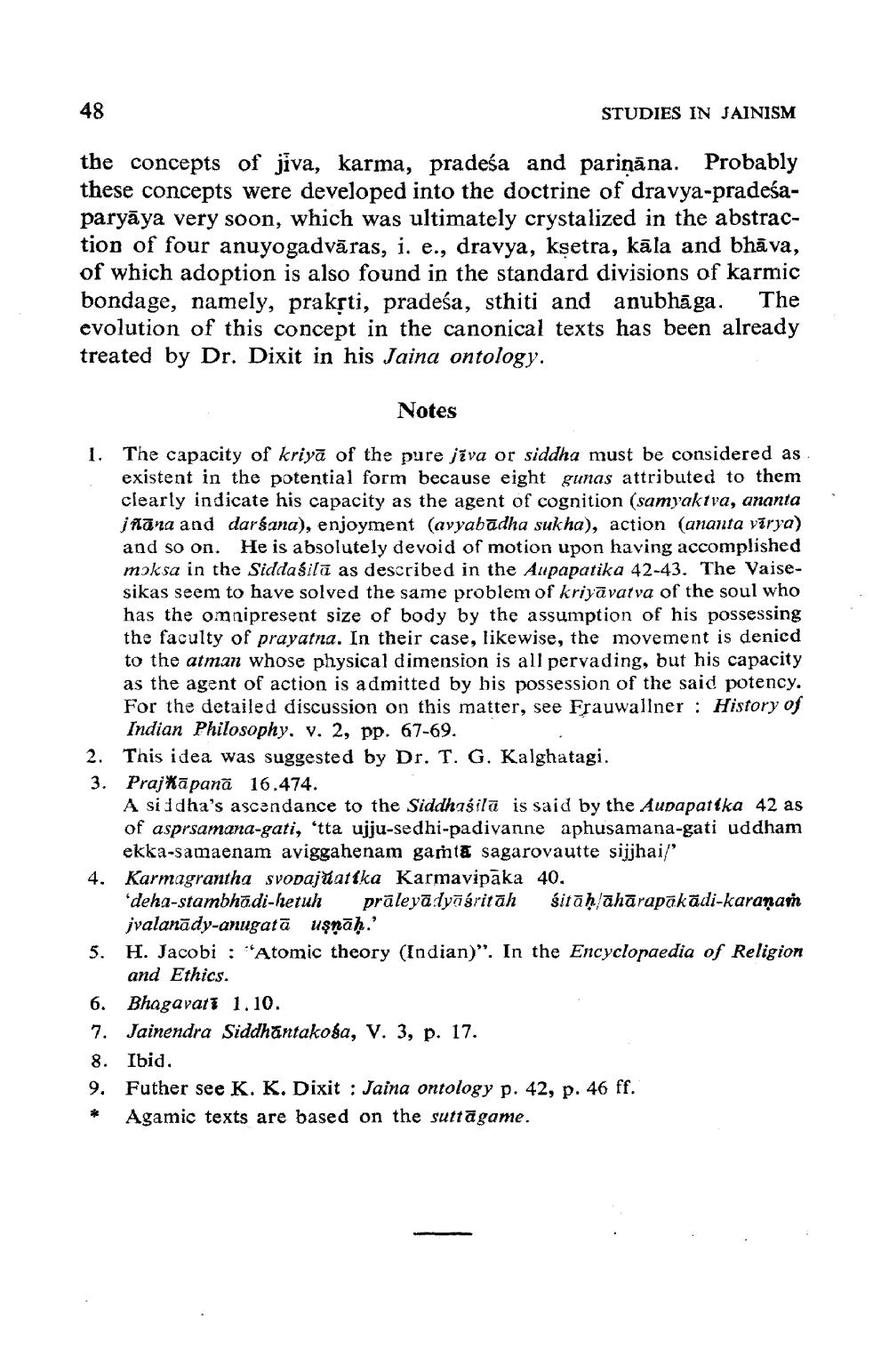________________
48
STUDIES IN JAINISM
the concepts of jiva, karma, pradeśa and pariņāna. Probably these concepts were developed into the doctrine of dravya-pradeśaparyāya very soon, which was ultimately crystalized in the abstraction of four anuyogadvāras, i. e., dravya, kşetra, kāla and bhāva, of which adoption is also found in the standard divisions of karmic bondage, namely, prakrti, pradeśa, sthiti and anubhāga. The evolution of this concept in the canonical texts has been already treated by Dr. Dixit in his Jaina ontology.
Notes
1. The capacity of kriyā of the pure jīva or siddha must be considered as
existent in the potential form because eight gunas attributed to them clearly indicate his capacity as the agent of cognition (samyaktva, ananta inana and darśana), enjoyment (ayyabādha sukha), action (ananta vīrya) and so on. He is absolutely devoid of motion upon having accomplished moksa in the Siddašilā as described in the Aupapatika 42-43. The Vaisesikas seem to have solved the same problem of kriyāvatva of the soul who has the omnipresent size of body by the assumption of his possessing the faculty of prayatna. In their case, likewise, the movement is denied to the atman whose physical dimension is all pervading, but his capacity as the agent of action is admitted by his possession of the said potency. For the detailed discussion on this matter, see Frauwallner : History of
Indian Philosophy, v. 2, pp. 67-69. 2. This idea was suggested by Dr. T. G. Kalghatagi. 3. Prajkā panā 16.474.
A siddha's ascendance to the Siddhasila is said by the Aupapatika 42 as of asprsamana-gati, 'tta ujju-sedhi-padivanne aphusamana-gati uddham
ekka-samaenam aviggahenam gamt& sagarovautte siijhai/ 4. Karmagrantha svopajšatika Karmavipaka 40.
deha-stambhādi-hetuh prāleyādyāśritah sitāḥ ahārapākādi-karanam
jvalanādy-anugatā uşnāh.' 5. H. Jacobi : Atomic theory (Indian)". In the Encyclopaedia of Religion
and Ethics. 6. Bhagavati 1.10. 7. Jainendra Siddhantakosa, V. 3, p. 17. 8. Ibid. 9. Futher see K. K. Dixit : Jaina ontology p. 42, p. 46 ff. the Agamic texts are based on the suttā game.




